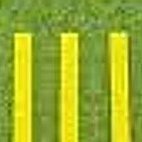Hua Hin Water Problems
-
Recently Browsing 0 members
- No registered users viewing this page.
-
Topics
-
-
Popular Contributors
-
-
Latest posts...
-
14
'Disgraceful’: Critics blast Trump for latest move 'doing Putin’s bidding’
I love reading propaganda in the morning. -
18
Tourist visa after ED
BKK or phuket right? That is the key point. Maybe CNX these days too -
43
USA UPenn ban trans athletes after probe involving swimmer Lia Thomas
I don't think that figure of 0.0013% is accurate. There are only about 100 in the world with that condition. -
18
Tourist visa after ED
The Ministry of Education changed the rules regarding contact hours (doubled) and around reporting attendance in a paper in 2016 - it had huge ramifications and forced many schools to close, including one of the main sponsors of this forum. Regarding proficiency, I read just recently about someone denied entry because they were asked to write the Thai alphabet and were unable to do so. -
78
No male Thai friends after years of living here? Help for the lonely farangs left out.
I've made several pals on AN, mostly dead now. Bit tired of my pals dying on me. -
0
Farang assaulted during accident
It was about 3:00 AM and I was heading to the local 7 eleven on foot. Suddenly I hear a crash and then a bunch of thais shouting. I look over and I see a truck stopped on the road with a motorcycle on the ground. The thais are angrily yelling at a white guy. It's hard to say who was at fault, One of the thais keeps punching the foreigner in the head. He punches once, waits 30 seconds or a minute, punches again. After about three rounds of this, the foreigner gets angry and squares up. A moto taxi driver mediating suddenly does a lunging punch, punching the white guy in the head. The foreigner realizes he's being attacked from two sides and covers his head. This prompts both of the Thais to stop. My read was the moto taxi guy was enforcing violence one way and successfully forced the foreigner not to respond. I watched for about three more minutes and then left. There was at least less Thai to foreigner punching in the next three minutes (I counted one more). I didn't see the accident, but while they were trying to get police coming over, the Thai men were clearly in the wrong by punching the foreigner while he was simply asking the crowd "why does he keep punching me?" That was a scary situation to see one way enforcement by the moto taxi guys. I wanted to video it but man, that level of street justice... no thanks. Thai men seem to know they can get away with casual violence and use it unprovoked if they feel justified.
-
-
Popular in The Pub

.thumb.jpg.3ee24d9400fb02605ea21bc13b1bf901.jpg)


.thumb.jpeg.d2d19a66404642fd9ff62d6262fd153e.jpeg)







Recommended Posts
Create an account or sign in to comment
You need to be a member in order to leave a comment
Create an account
Sign up for a new account in our community. It's easy!
Register a new accountSign in
Already have an account? Sign in here.
Sign In Now